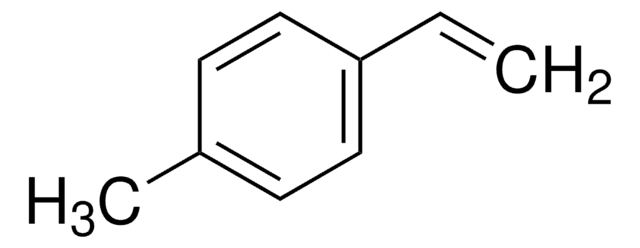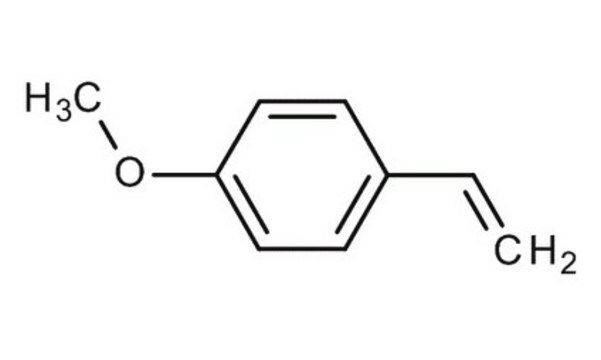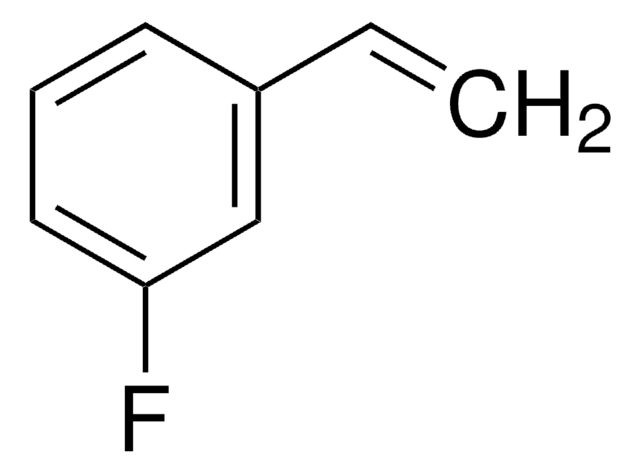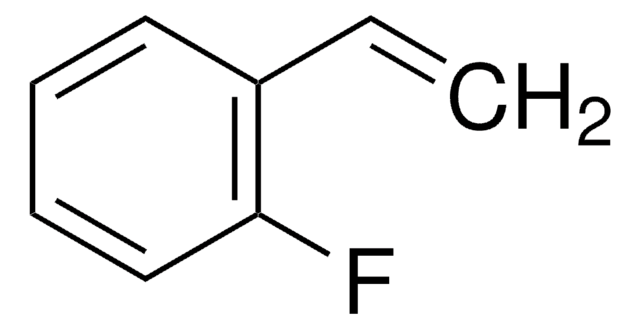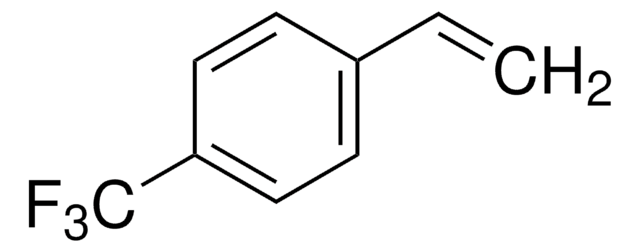184675
3-Methylstyrene
99%, contains 0.1% 3,5-di-tert-butylcatechol as inhibitor
Synonym(s):
3-Vinyltoluene
About This Item
Recommended Products
Quality Level
Assay
99%
form
liquid
contains
0.1% 3,5-di-tert-butylcatechol as inhibitor
refractive index
n20/D 1.541 (lit.)
bp
170-171 °C (lit.)
mp
−82-−81 °C (lit.)
density
0.89 g/mL at 25 °C (lit.)
SMILES string
Cc1cccc(C=C)c1
InChI
1S/C9H10/c1-3-9-6-4-5-8(2)7-9/h3-7H,1H2,2H3
InChI key
JZHGRUMIRATHIU-UHFFFAOYSA-N
Looking for similar products? Visit Product Comparison Guide
Related Categories
Signal Word
Danger
Hazard Statements
Precautionary Statements
Hazard Classifications
Acute Tox. 4 Inhalation - Asp. Tox. 1 - Eye Irrit. 2 - Flam. Liq. 3 - Skin Irrit. 2 - STOT SE 3
Target Organs
Respiratory system
Storage Class Code
3 - Flammable liquids
WGK
WGK 3
Flash Point(F)
123.8 °F - closed cup
Flash Point(C)
51 °C - closed cup
Regulatory Listings
Regulatory Listings are mainly provided for chemical products. Only limited information can be provided here for non-chemical products. No entry means none of the components are listed. It is the user’s obligation to ensure the safe and legal use of the product.
FSL
Group 4: Flammable liquids
Type 2 petroleums
Hazardous rank III
Water insoluble liquid
JAN Code
184675-1G:
184675-BULK:
184675-VAR:
184675-500G:
184675-5G:
Choose from one of the most recent versions:
Already Own This Product?
Find documentation for the products that you have recently purchased in the Document Library.
Customers Also Viewed
Global Trade Item Number
| SKU | GTIN |
|---|---|
| S84043-1EA | |
| 184675-5G | 4061838756725 |
| 184675-1G |
Our team of scientists has experience in all areas of research including Life Science, Material Science, Chemical Synthesis, Chromatography, Analytical and many others.
Contact Technical Service